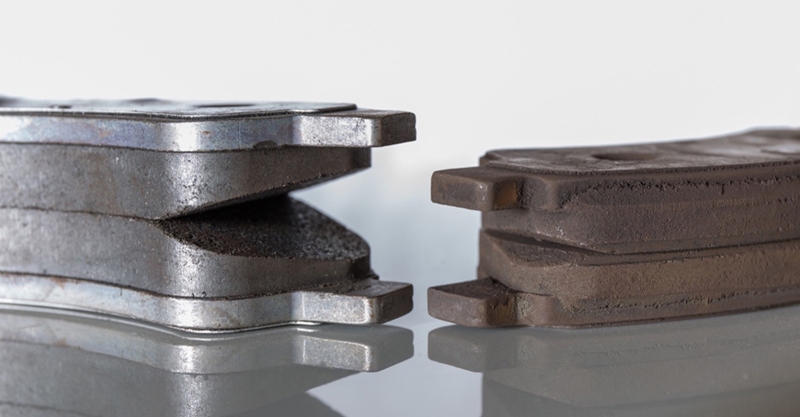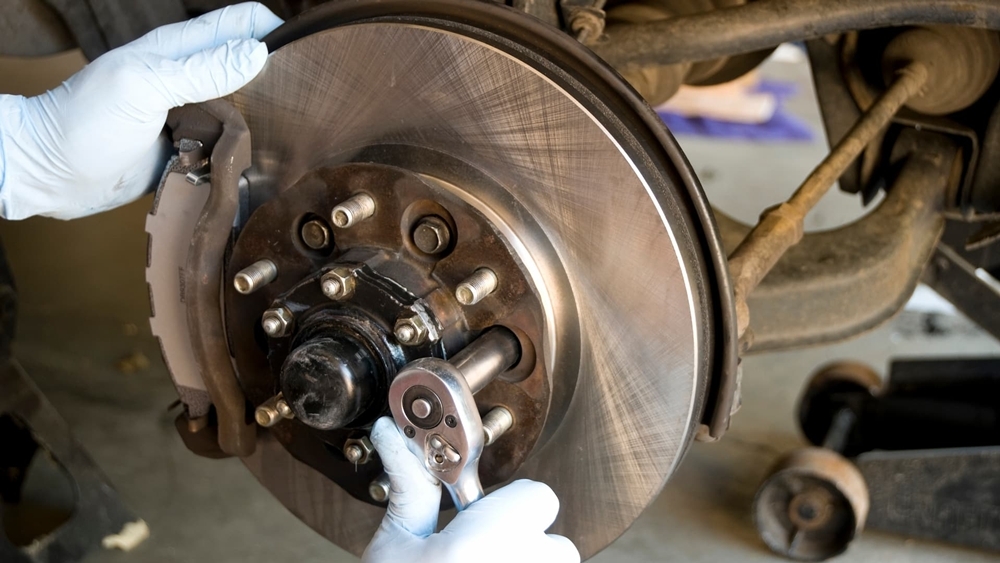Your car’s braking system is one of its most critical safety components, and understanding brake pads wear is essential for every driver. When you press the brake pedal, friction material on your brake pads creates the stopping power that brings your vehicle to a halt. Over time, this friction naturally causes brake pad’s wear, making regular monitoring and replacement crucial for your safety on the road.
Also read: Brake Pads Depth: 7 Crucial Facts That Could Save You Thousands
Table of Contents
What Causes Brake Pads Wear?
Brake pads wear occurs through the natural friction process that stops your vehicle. Every time you brake, the pads press against the brake rotors, creating heat and gradually wearing down the friction material. This process is completely normal and expected, but several factors can accelerate or slow down the rate of brake pad’s wear.
The primary cause is simply usage. City driving with frequent stops and starts will cause faster brake pads wear compared to highway driving. Your driving style also plays a significant role – aggressive braking and riding the brakes will accelerate wear patterns significantly.
Environmental conditions contribute to brake pad’s wear as well. Mountainous terrain requires more braking, while dusty or sandy conditions can act like sandpaper on your brake components. Even the weight of your vehicle affects how quickly brake pad wear down, with heavier vehicles naturally requiring more stopping power.

Brake Pads Wear Severity Scale

Signs Your Brake Pads Need Attention
Recognizing the warning signs of brake pad wear can prevent dangerous situations and costly repairs. The most obvious indicator is a squealing or grinding noise when braking. Modern brake pads include wear indicators – small metal tabs that create a squealing sound when the pad material becomes thin.
Visual inspection can also reveal brake pads wear. If you can see through your wheel spokes, look at the brake pad thickness. Healthy pads should be at least 1/4 inch thick. Anything thinner indicates significant brake pad,s wear that requires immediate attention.
Your vehicle’s performance provides additional clues about brake pad wear. If your car takes longer to stop, pulls to one side when braking, or if the brake pedal feels spongy or vibrates, these symptoms often indicate uneven or excessive brake pads wear.
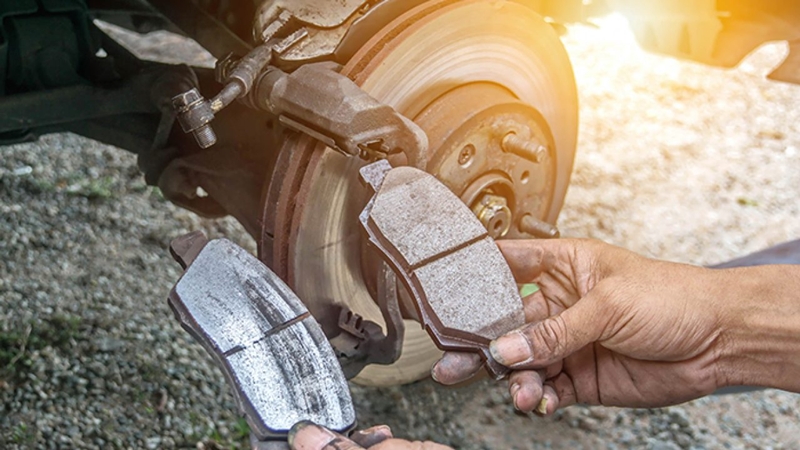
The Science Behind Brake Pads Wear Patterns
Understanding brake pads wear patterns helps you maintain your braking system more effectively. Normal brake pad wear should be relatively even across the surface of the pad. However, several factors can create uneven wear patterns that indicate underlying issues.
Tapering occurs when brake pad’s wear more on one edge than the other, often caused by sticking brake calipers or worn suspension components. This type of brake pad wear reduces braking efficiency and can lead to premature replacement of other brake components.
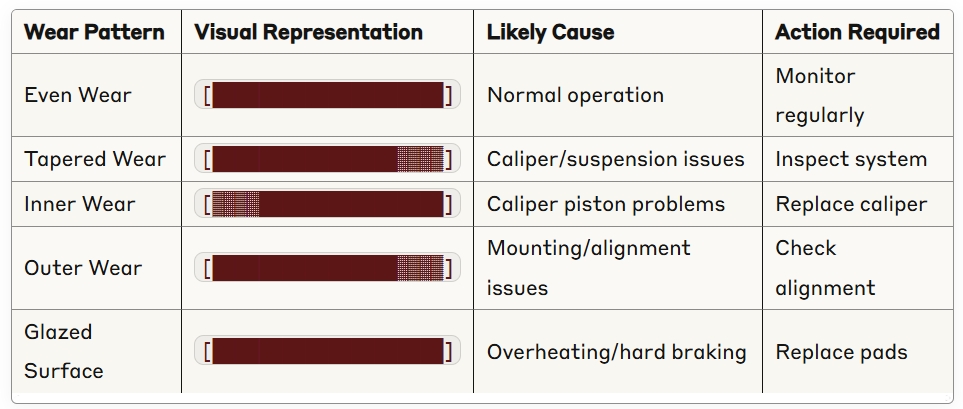
Brake Temperature vs. Wear Rate

Hot spots or glazing represent another type of brake pad wear pattern. When brake pads overheat, the friction material can become glazed and hard, reducing stopping power. This often happens with aggressive driving or when brake pads wear beyond their recommended replacement point.
Factors That Influence Brake Pads Wear Rate
Several controllable and uncontrollable factors affect how quickly brake pad’s wear down. Understanding these factors helps you maximize the life of your brake pads and budget for replacements appropriately.
- Your driving habits have the most significant impact on brake pads wear rate. Smooth, gradual braking extends pad life, while sudden stops and riding the brakes accelerate wear. Planning ahead and allowing more following distance can dramatically reduce brake pad wear over time.
- Vehicle maintenance also affects brake pad wear patterns. Regular brake fluid changes, proper wheel alignment, and functioning suspension components all contribute to even brake pad wear. Neglecting these maintenance items can cause premature and uneven brake pads wear.
- The quality of your brake pads influences wear rate as well. While premium pads may cost more initially, they often last longer and provide better performance than budget options. However, even the best pads will experience normal brake pad,s wear and require eventual replacement.
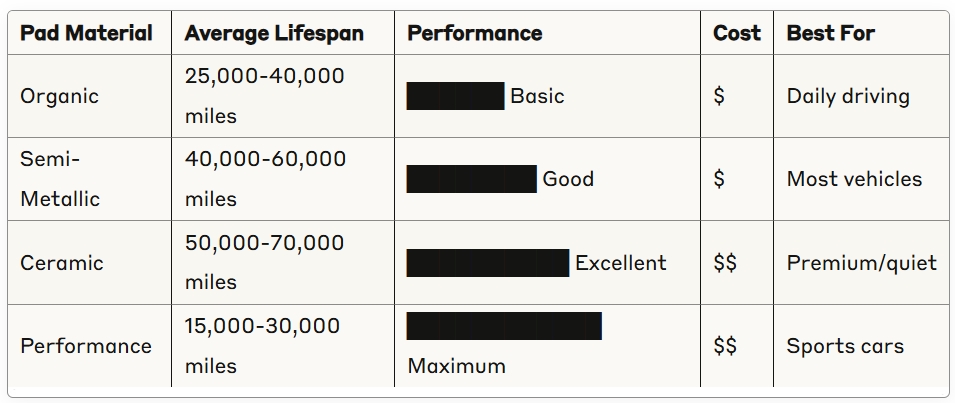
💰 Brake Pads Wear Cost Analysis

Cost Escalation Timeline

Preventing Premature Brake Pads Wear
Taking proactive steps to minimize brake pads wear can save money and improve safety. The most effective strategy is developing smooth driving habits that reduce stress on your braking system.
Anticipating stops and gradually slowing down reduces the heat and friction that cause brake pads wear. Using engine braking when descending hills, especially when towing or carrying heavy loads, can significantly extend brake pad life by reducing the workload on your brakes.
Regular maintenance prevents many causes of accelerated brake pads wear. Keeping your brake fluid clean and at proper levels ensures optimal brake performance. Having your brakes inspected during routine maintenance allows technicians to catch brake pads wear before it becomes dangerous or expensive.
🎁 FREE BONUS: Your Complete Brake Maintenance Checklist
Don’t let brake pad wear catch you off guard! Here’s a comprehensive, printable maintenance checklist that puts all the essential information from this guide right at your fingertips. Print it out and keep it in your glove compartment for quick reference!
Common Brake Pads Wear Myths Debunked
Despite brake pad wear being a common maintenance issue, several persistent myths can lead drivers to make costly mistakes or compromise their safety. Let’s separate fact from fiction when it comes to understanding brake pad wear.
Myth #1: “Expensive brake pads always last longer” Reality: While premium brake pads often offer better performance and longevity, price doesn’t always equal durability. Some expensive performance pads are designed for maximum stopping power rather than longevity, resulting in faster brake pad wear. The key is choosing pads matched to your driving style and vehicle requirements, not just the highest price tag.
Myth #2: “All four brake pads wear at the same rate” Reality: This is completely false. Front brake pads typically handle 60-70% of your vehicle’s braking force, causing significantly faster brake pad wear compared to rear pads. Additionally, individual pads can wear unevenly due to sticking calipers, alignment issues, or suspension problems. Regular inspection helps identify these uneven brake pad wear patterns early.
Myth #3: “You can’t drive at all once brake pads start wearing thin” Reality: While you shouldn’t ignore brake pads wear, there’s a difference between worn pads and dangerously thin pads. Most brake pads have built-in wear indicators that start squealing when replacement is needed, but you typically still have some safe driving time left. However, once you hear grinding noises, stop driving immediately as this indicates metal-on-metal contact.
Myth #4: “Brake pads wear is always gradual and predictable” Reality: While normal brake pads wear follows predictable patterns, several factors can cause sudden acceleration in wear rates. Aggressive driving, towing heavy loads, or mechanical problems can cause brake pad wear to increase dramatically in just a few thousand miles. This is why regular inspections matter more than just tracking mileage.
Myth #5: “Ceramic brake pads never cause brake pads wear problems” Reality: While ceramic pads offer many advantages including reduced noise and longer life, they’re not immune to brake pad wear issues. They can still wear unevenly, overheat under extreme conditions, and may not provide optimal performance in very cold weather. No brake pad material eliminates the need for regular brake pads wear monitoring.
When to Replace Worn Brake Pads
Knowing when brake pad wear has reached the replacement point is crucial for safety. Most brake pads should be replaced when they reach 3-4mm of thickness, though this can vary by manufacturer and pad type.
Don’t wait until you hear grinding noises to address brake pad wear. By the time metal-on-metal contact occurs, you may have damaged your brake rotors, turning a simple pad replacement into a more expensive repair job.
Professional inspection is the most reliable way to assess brake pad,s wear. Trained technicians can measure pad thickness, evaluate wear patterns, and determine if other brake components need attention. Many shops offer free brake inspections, making it easy to stay on top of brake pad wear.
Brake Pads Wear Diagnostic Flowchart
When you notice potential brake issues, this step-by-step diagnostic guide helps you identify the severity of brake pad wear and determine your next action. Follow the flowchart to assess your situation safely and effectively.
STEP 1: Listen to Your Brakes
Do you hear squealing when braking?
- ✅ YES → Likely Cause: Wear indicators activated
- Action: Schedule inspection within 1-2 weeks
- Safety: Safe to drive normally, but don’t delay
- Brake Pad Wear Level: 25-50% remaining
- ❌ NO → Continue to Step 2
Do you hear grinding or scraping sounds?
- ✅ YES → Critical Issue: Metal-on-metal contact
- Action: STOP DRIVING – Call for tow or emergency repair
- Safety: Dangerous – brake failure risk
- Brake Pad Wear Level: 0-10% remaining
- ❌ NO → Continue to Step 2
STEP 2: Visual Inspection
Can you see your brake pads through the wheel spokes?
- ✅ YES → Check pad thickness
- More than 1/4 inch thick: Good condition, monitor regularly
- Less than 1/4 inch thick: Schedule replacement soon
- Metal backing visible: Replace immediately
- ❌ NO → Remove wheel for better view or proceed to Step 3
STEP 3: Feel Your Vehicle’s Performance
Does your car pull to one side when braking?
- ✅ YES → Likely Cause: Uneven brake pad wear or caliper issues
- Action: Professional inspection needed within days
- Safety: Reduced braking effectiveness on one side
Does the brake pedal feel spongy or sink to the floor?
- ✅ YES → Likely Cause: Brake fluid issues or severe brake pads wear
- Action: Immediate professional inspection required
- Safety: Potentially dangerous – avoid heavy braking
Do you feel vibration or pulsing through the brake pedal?
- ✅ YES → Likely Cause: Warped rotors from excessive brake pad wear
- Action: Schedule brake service soon
- Safety: Safe for normal driving, avoid aggressive braking
STEP 4: Mileage Check
When were your brake pads last replaced?
- Less than 20,000 miles ago: Likely normal brake pad wear
- 20,000-40,000 miles ago: Time for inspection
- 40,000+ miles ago: Overdue for replacement
- Never replaced/Unknown: Immediate inspection needed
IMMEDIATE ACTION REQUIRED
Any of these symptoms present?
- Grinding noises ⚠️
- Brake pedal goes to floor ⚠️
- No braking response ⚠️
- Burning smell after braking ⚠️
- Brake warning light on dashboard ⚠️
→ STOP DRIVING IMMEDIATELY – Call for emergency service
✅ NORMAL BRAKE PADS WEAR INDICATORS
Schedule routine maintenance if you notice:
- Slight squealing during light braking
- Gradual increase in stopping distance
- Brake pads appear thinner than before
- Vehicle has 30,000+ miles since last replacement
💡 Pro Tip: When in doubt about brake pad wear severity, always err on the side of caution and seek professional inspection. Your safety is worth more than the cost of an unnecessary brake check.
Warranty and Insurance Coverage for Brake Repairs
Understanding what brake repairs are covered can save you significant money when dealing with brake pad wear issues. Coverage varies widely depending on your specific policies and vehicle age, but knowing the basics helps you make informed decisions.
Vehicle Warranty Coverage
Most new vehicle warranties cover brake components for defects in materials or workmanship, but normal brake pad wear is typically excluded as routine maintenance. However, if brake pad wear prematurely due to manufacturing defects or faulty brake system components, you may have coverage. Extended warranties often include brake repairs, but read the fine print carefully as brake pads wear coverage varies significantly between providers.
What’s Usually Covered
- Brake system defects (calipers, master cylinder, brake lines)
- Premature brake pad wear due to manufacturing faults
- Brake component failures within warranty period
- Labor costs for covered brake repairs
What’s Usually NOT Covered
- Normal brake pads wear from regular driving
- Brake damage from aggressive driving or racing
- Brake repairs needed due to lack of maintenance
- Rotors worn due to ignored brake pads wear warnings
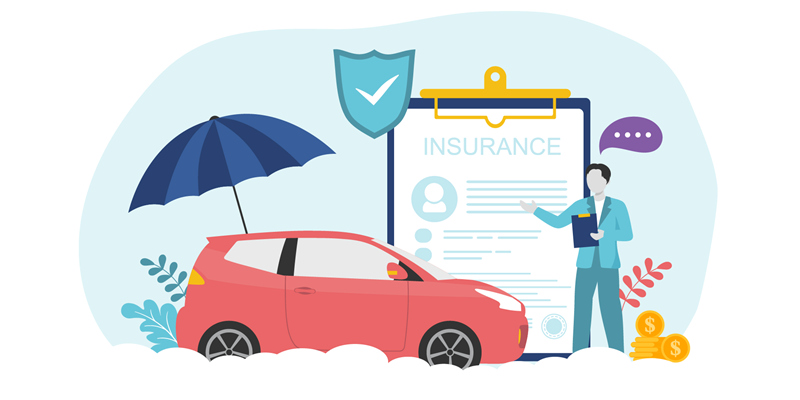
Insurance Considerations
Standard auto insurance typically doesn’t cover brake repairs since brake pad wear is considered normal maintenance. However, if brake failure causes an accident, your comprehensive or collision coverage may apply to accident-related damages. Some specialty mechanical breakdown insurance policies do cover brake repairs, including those related to brake pads wear.
Documentation Tips
Keep detailed records of all brake inspections and maintenance to support warranty claims. If you suspect brake pads wear is excessive or premature, have it professionally documented before the warranty expires. Photos, maintenance receipts, and mileage records can be crucial for successful warranty claims related to brake pad wear issues.
Also read: 5 Shocking Brake Pad Replacement Cost Factors That Could Save You Hundreds

Frequently Asked Questions
-
How often should I check for brake pads wear?
You should inspect your brake pads every 12,000 miles or during regular maintenance intervals. However, if you notice any warning signs like squealing, grinding, or changes in braking performance, check immediately regardless of mileage.
-
Can I drive with worn brake pads?
Driving with excessive brake pad wear is dangerous and can lead to brake failure. If your pads are worn to the metal backing, stop driving immediately and have them replaced. Even moderately worn pads should be replaced promptly to maintain safe stopping distances.
-
Do all four brake pads wear at the same rate?
No, brake pad wear at different rates depending on their position. Front brake pads typically wear faster than rear pads because they handle 60-70% of the braking force. Individual pads may also wear unevenly due to caliper issues or suspension problems.
-
How much does it cost to replace worn brake pads?
Brake pad replacement costs vary widely based on your vehicle, pad quality, and labor rates. Basic pad replacement typically ranges from $100-300 per axle, while premium pads or complex systems may cost $300-600 per axle.
-
Can brake pads wear cause other damage?
Yes, ignoring brake pads wear can damage brake rotors, calipers, and other components. Metal-on-metal contact from completely worn pads can warp rotors, requiring expensive resurfacing or replacement. This is why addressing brake pad wear promptly is so important.
-
What’s the difference between brake pads wear on different vehicles?
Larger, heavier vehicles typically experience faster brake pad wear due to increased stopping requirements. Performance vehicles may also wear pads more quickly due to aggressive driving and higher-performance brake systems designed for maximum stopping power rather than longevity.
Need a mechanic? Find one on the Mobile Mechanic Directory
Final Thoughts
Understanding brake pads wear is essential for every driver who wants to maintain their vehicle safely and cost-effectively. Regular monitoring, proper driving habits, and timely replacement of worn brake pads ensure your braking system performs reliably when you need it most.
Remember that brake pad wear is a normal part of vehicle operation, but staying ahead of the wear process protects both your safety and your wallet. By recognizing the signs of brake pads wear and addressing them promptly, you’ll enjoy confident stopping power and avoid the higher costs associated with brake system damage.
Don’t take chances with your brakes – if you suspect brake pad wear has reached the replacement point, have them inspected by a qualified technician. Your safety and the safety of others on the road depends on maintaining properly functioning brakes throughout your vehicle’s life.

